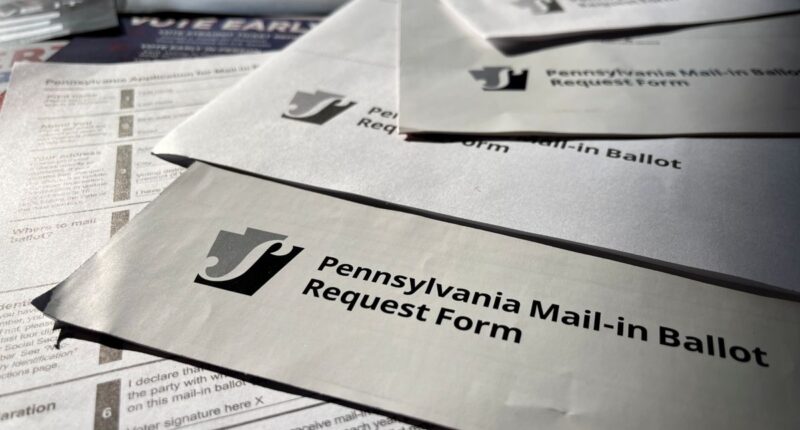Since Pennsylvania opened mail-in voting to all voters in 2019, courts have been asked repeatedly to settle questions about what county election boards should do when receiving a ballot from a voter who didn’t follow the rules.
In an opinion this week, the Third Circuit U.S. Court of Appeals said that, although Pennsylvania law requires voters to sign and date the outer envelope of a mail-in ballot, and the law instructs counties to “set aside” ballots with missing or incorrect dates, counties should count those ballots anyway.
The preprinted outer envelope has a colorful empty box where voters are supposed to write the date they voted. The ballot is placed in a smaller, unmarked privacy envelope inside the outer envelope.
Somehow, thousands of voters either miss the date completely or write a date later than the voting deadline. For example, election day is Nov. 4 but the voter writes that they voted Nov. 6. Ballots received by 8 p.m. on election day are counted.
Failure to conform with the date requirement caused over 10,000 ballots to be discarded in the 2022 general election, according to the opinion.
“The date requirement seems to hamper rather than facilitate election efficiency,” The opinion reads. “Discarding thousands of ballots every election is not a reasonable trade-off in view of the date requirement’s extremely limited and unlikely capacity to detect and deter fraud.”
The court said it cannot justify Pennsylvania’s practice of discarding “thousands of presumably proper ballots,” just because the envelope is wrong.
The decision affirms the lower court’s decision by Judge Susan Paradise Baxter from the U.S. Court from the Western District of Pennsylvania.
But other courts have instructed counties not to count ballots inside faulty envelopes. In November, 2024, just days before the presidential election, the Pennsylvania Supreme Court ordered mail-in ballots arriving in an envelope with no date or the wrong date should not be counted for the 2024 election.
Immediately after universal mail-in ballots were adopted in Pennsylvania, Democrats pushed heavily for voters to vote by mail. While Democrats went door-to-door, encouraging people to vote by mail, Republicans were skeptical about the security of mail-in ballots. Democrats overwhelmed Republicans with mail-in votes in 2022, earning victories in numerous races, including the governor’s race and flipping a longtime Republican (Pat Toomey) Senate seat to Democrat (John Fetterman). In 2024, more Republicans tried mail-in voting, but it is still a method favored by Democrats.
President Trump intends to ban mail-in voting with an executive order. A move that will surely be met with leftist lawfare.
Josh Findlay, director of the Texas Public Policy Foundation’s National Election Protection Project and the former national director of election integrity for the Republican National Committee, recently explained why mail-in voting is “the least secure method of casting a ballot.”
“Unlike in-person voting, where safeguards such as voter ID verification are standard and supported by a majority of the people, mail-in ballots are susceptible to fraud, misdelivery, and errors,” Findlay wrote for The Federalist. “Ballots can be intercepted and fraudulently cast, lost in transit, or even altered without the voter’s knowledge. In addition, signature verification — a key safeguard — is far from foolproof.”
Beth Brelje is an elections correspondent for The Federalist. She is an award-winning investigative journalist with decades of media experience.



![‘Environmental And Safety Risks’ Reportedly Declared After Coors Light Semi-Truck Crashes Into Popeyes [WATCH]](https://citigist.com/wp-content/uploads/2024/02/‘Environmental-And-Safety-Risks-Reportedly-Declared-After-Coors-Light-Semi-Truck-380x200.jpg)




